Yucca: description, types and care
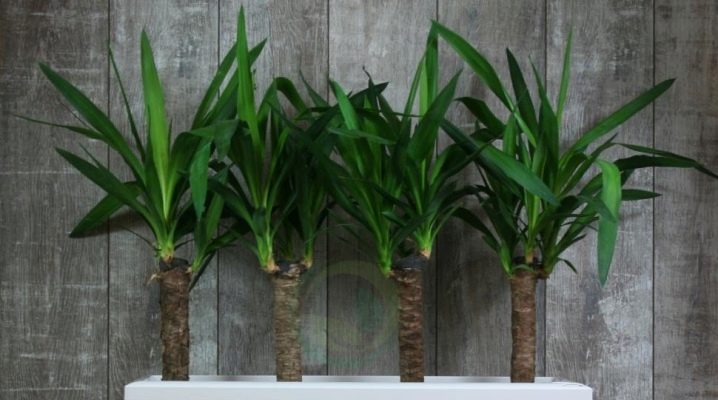
In the Russian climate, growing evergreens is a real challenge for any gardener. But it is all the more important to be able to cope with it. Let's see what yucca is and how to grow it correctly.
Peculiarities
Yucca even looks deceiving - it is sometimes confused with a palm tree. But this culture has nothing to do with true palms. According to the botanical classification, it belongs to the Agave family. The origin of the yucca is established quite accurately: its natural habitat is the north and center of the American continent. For the sake of accuracy, it must be said right away that this is not one kind of culture, but about 40 species.

All yuccas are tree-like plants. Different types can have a barrel or a socket. The plant is covered with rigid or semi-rigid foliage of the xiphoid shape. The length of the leaf varies from 0.25 to 1 m. Its width can be 0.01–0.08 m.
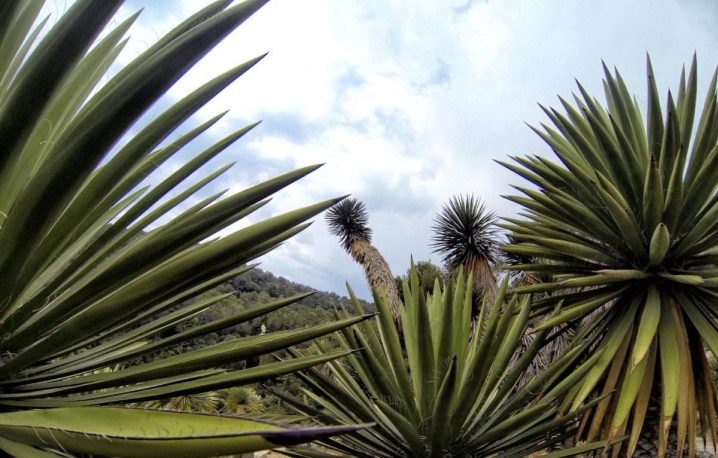
The foliage is collected in a bunch at the top of the shoot or forms a rosette near the root. The color of the leaves can vary greatly. There are both green and gray colors. You can find both erect and drooping leaves. In some cases, the edges are serrated, in others they are completely smooth. Some yucca leaves are covered with threads and may even have sharp thorns.


As for the flowers, they are numerous (there can be up to 300 flowers per plant). The length of an individual bud can be 0.07 m. Its structure resembles a bell or a bowl. Along with the flowers painted in white, there are others that are painted in a creamy greenish or yellowish tone. Flowers are concentrated in large panicles, the length of which varies from 0.5 to 2.5 m. Such panicles can either stand upright or descend.

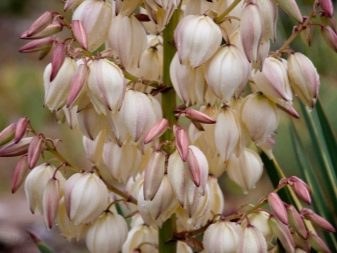
It is rather difficult to use yucca as an indoor flower, because the conditions characteristic of its homeland are reproduced with great difficulty. But if it still comes to the formation of fruits, they can be both juicy and dry "boxes".
In the traditional economy of the peoples of North and Central America, yucca is used very widely. For example, fabric can be made of it. When the flowers are cut, a juice is released that contains a large amount of sugar. Even before the fibers for the production of jeans began to be made from cotton, yucca was used to make them. Such an additive is still practiced in the USA.

This plant is used for the following purposes:
- production of ropes;
- receipt of paper;
- extraction of substances that help in the treatment of various diseases.
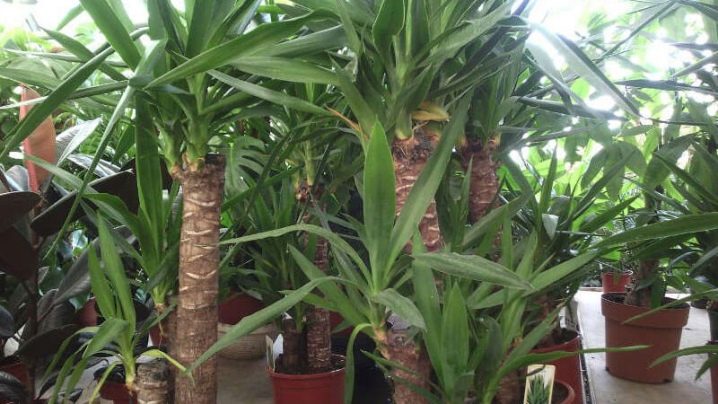
Indoor yucca, reaching maturity, sometimes grows up to 4 m, so it can not be placed in every room. It is very difficult to achieve flowering, it is typical only for adult plants, therefore, in case of failure, gardeners should not blame themselves, but they should not be afraid of any extraordinary problems. In the Black Sea, a number of yucca species grow successfully in the open air, therefore, we can say that even winter cold does not destroy it.
The popularity of this culture and plants similar to it is now growing steadily. They are trying to be used in interior design. The most prized specimens have a branched trunk in which more than one growth point is formed.
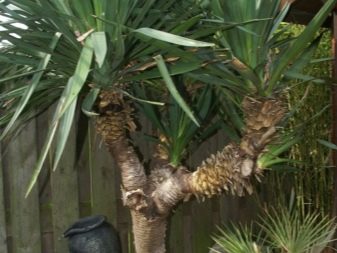
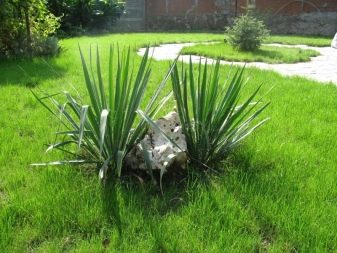
Yucca can be used as a solitaire in high-tech landscaping. In a minimalistic composition, it is also used.Some landscape designers successfully use such a shrub in a classic setting. In offices, a chain of false palm trees is often planted in large containers, forming a "ladder" in height.
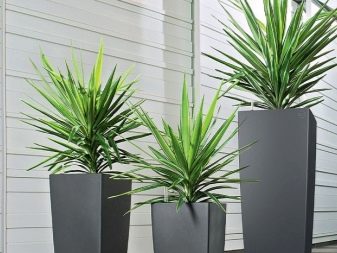
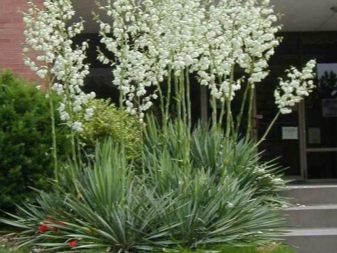

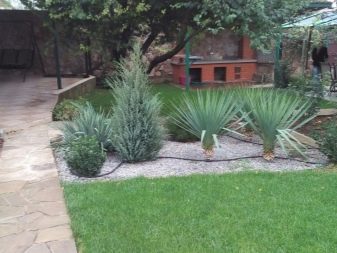
Varieties
It is worth considering what specific subtypes of yucca exist.
- So-called aloe-leaf variety in nature, it mainly inhabits Central America and the desert areas in the south of North America, and it can also be seen in Bermuda and Jamaica. Aloe yuccas develop rather slowly. Gradually the plant turns into a spherical bush (sometimes into a tree 7–8 m high). On the tree-like stem, which branches considerably in adult specimens, traces of fallen leaves can be found. The leaf blades look like an elongated lancet, they are painted in dark green tones. In summer, the rosettes of adult yuccas form panicles up to 0.45 m in height. Such panicles are covered with abundant flowers in the form of bells up to 0.03 m in length.
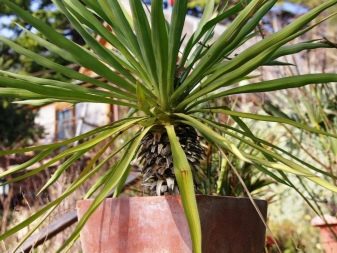

- Yucca Whippla is also noteworthy. This plant can be found in the northwestern states of Mexico, Arizona, and California. Like the previous yucca, it grows slowly. A distinctive feature is a relatively short stem, on which leaf rosettes over 1 m long are collected. The leaf plates are up to 0.9 m long. In summer, the rosettes help to form panicles up to 2 m in height. The rosette blooms only once and dies off immediately; it is replaced by a mass of lower processes.
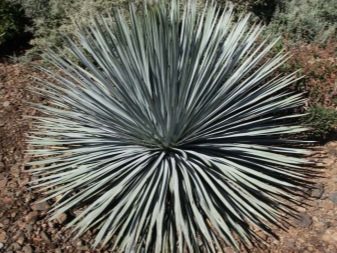

- Short-leaved yucca can be called treelike or giant. Its natural range is southeastern California and all of Arizona. This is no longer a bush, but practically a tree. Its height varies from 4 to 9 m. The diameter of the trunks can reach 0.5 m. The upper part of the trunks is highly branched. Hard and short foliage is distinguished by a dense arrangement. The length of individual leaves ranges from 0.15 to 0.3 m, while their width can be 0.006–0.015 m. At the very base, the leaf resembles a triangle. The flowers of the short-leaved yucca are pale yellow.
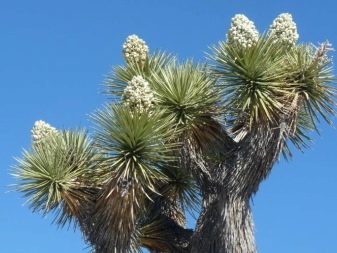
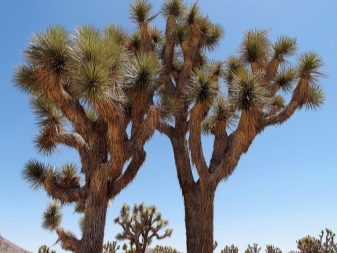
- The beak-shaped type is a tree up to 3 m tall. It forms a thick trunk and has a branched crown. The leaves are numerous and are of the leathery type. The width of the foliage is only about 0.01 m. The serrated edges are yellow. Large panicles with white flowers are fixed on a long peduncle.
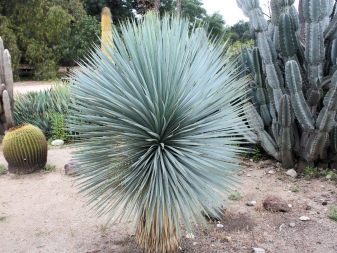
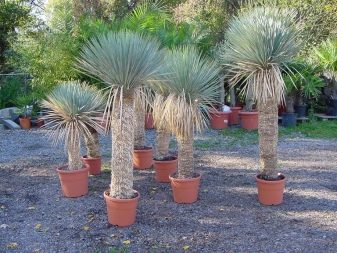
- The so-called radiant (aka high) yucca is attractive. The height of such a tree can be 5 or 7 m. It is covered with a mass of leaves, concentrating in dense groups. The foliage is of the linear type, its length varies from 0.45 to 0.6 m. In the middle part, the width is 0.01 m. Near the base, the leaves are narrower than at the top, the apex itself is sharp. The height of the inflorescences is sometimes 2 m.
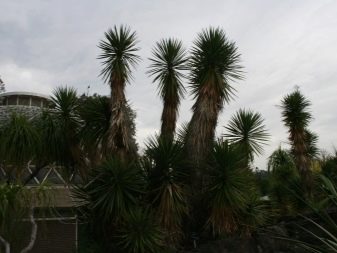

- The glorious yucca is quite famous, which has the common name "Spanish dagger". Such a plant forms a perennial tree-like shrub. In some cases, colonies of outlets are found. The height of the glorious yuccas can reach 5 m, but in most cases it is limited to 1–2 m.
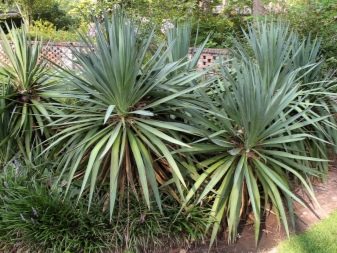
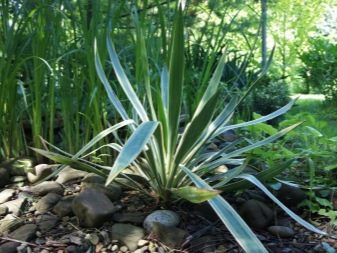
- Another plant from among the Agave - shidigera - has little decorative value. But it is used as an additive to animal feed. Many feed manufacturers have already mastered the production of such a component.

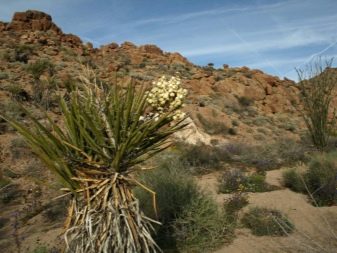
- It is imperative to say more about elephantis. This is another name for elephant yucca (such a false palm is great for indoor cultivation). The specific name is given due to the fact that the trunk looks like a large leg of an elephant. The leaves can be up to 1 m long. They are pointed and concentrated in rosettes at the base of the tree.
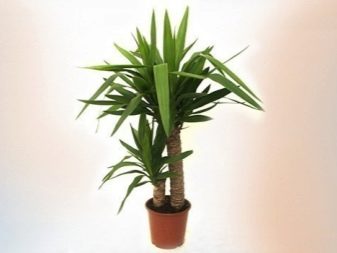
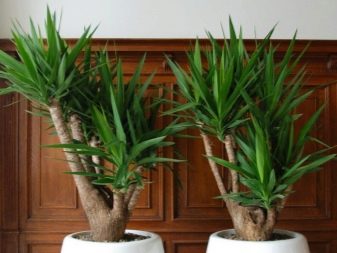
- Garden yucca or filamentose deserves special attention. It has two subspecies - gray and filamentous false palms. The filamentous type does not have a pronounced stem; his rhizomes are deep. The gray type has a relatively short (up to 1 m) trunk. When flowering, large white inflorescences are formed.
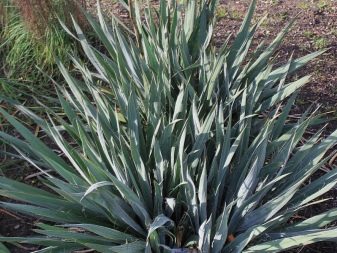
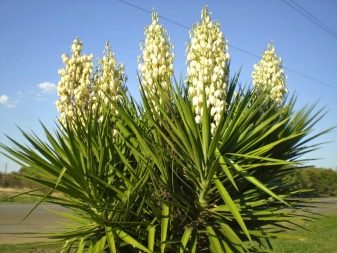
Conditions of detention
Lighting
Growing yucca at home is a pretty attractive idea, but it is quite difficult to bring your plan to life. Have to strictly take into account the requirements for plant care. The best conditions for an American guest are on heated balconies, since the plant receives maximum light. But on room windowsills, yucca should be placed with caution, because direct sunlight is a danger. It is desirable that they fall at an angle.
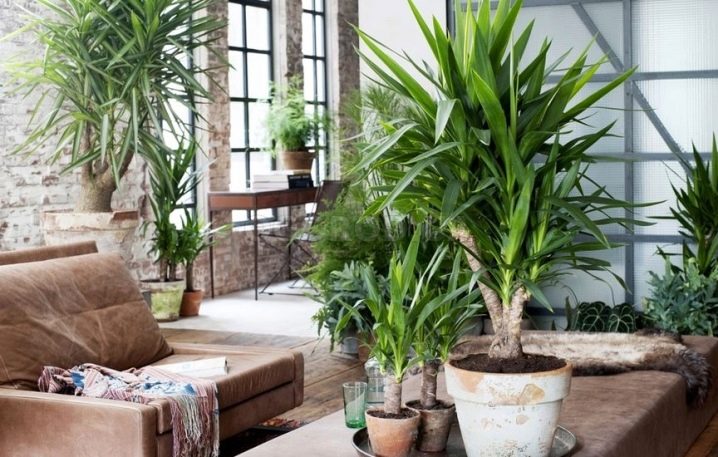
When winter comes, you will need enhanced lighting, otherwise the development of the yucca slows down, in some cases the leaves become pale, and the shape of the trunk is distorted.
Temperature and humidity
Indoor yuccas, when they grow, should be at a temperature of about +25 degrees. During rest (in the winter months), the air temperature is systematically lowered to +10 degrees, this should not be done abruptly. If significant changes occur, instead of stimulating the folding of the buds, they can be harmed and the plant can be damaged. The air for a number of varieties should be of limited humidity.
Spraying such plants is not required, but it is quite possible to wipe the foliage, thereby removing dust. When a houseplant is watered, it is temporarily removed in the shade, protected from drafts. Direct sunlight can cause severe burns.
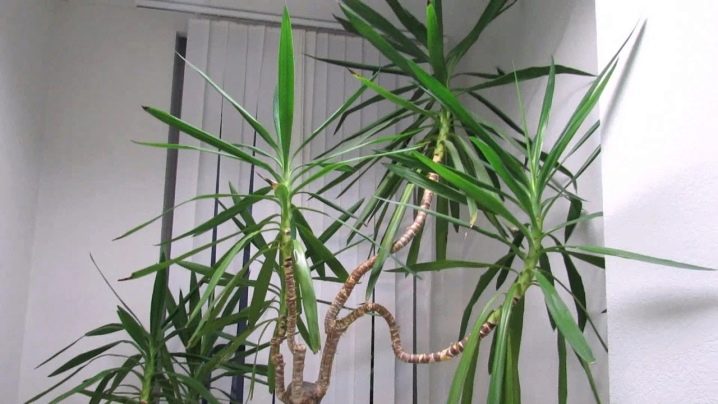
How to care?
Top dressing
Normal yucca care also includes replenishing nutritional deficiencies. The best way is to add special liquids by the root. They contain a certain amount of minerals in a given proportion. The amount of water for dilution should be 2 times more than what is written in the instructions. Yucca responds especially well to spraying the leaves from below. In the spring and summer, you need to feed the plant 1 time in 20 days, and in the autumn months and in the cold season, feeding is not needed.
The use of organic fertilizers is also quite acceptable. The best option is a combination of cow manure with leaf humus, while taking into account the characteristics of each variety and the size of the plant.
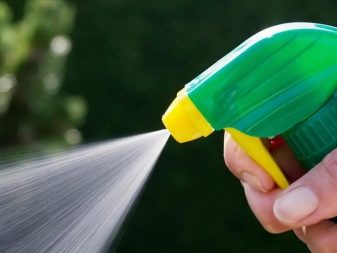
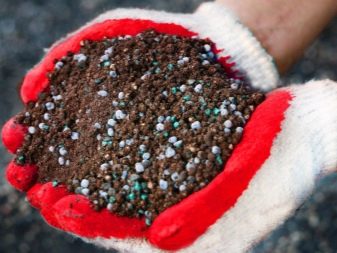
Pruning
Without pruning, it is almost impossible to grow a yucca properly. Branches are cut off when it grows rapidly, while losing its attractive appearance. When cutting branches, you should always leave 2 or 3 buds alone. It is advisable to cover the cuts with crushed activated carbon, then in about a month the buds will come to life and turn into full-fledged leaves.
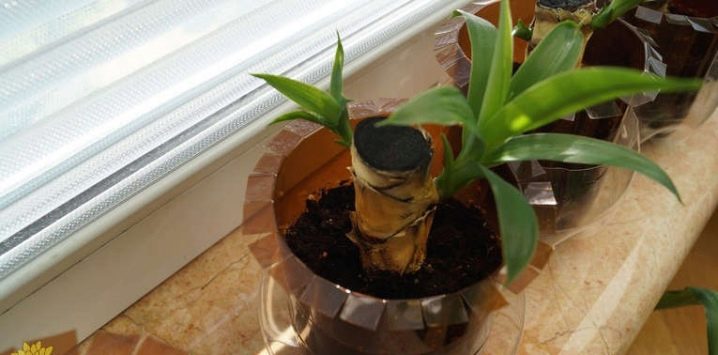
Important: it is not necessary to throw away cut branches, in many cases they are used as cuttings.
Pruning inevitably stops the thickening of the trunk. For this reason, it is undesirable to carry out it on plants whose stems are less than 0.05 m. Pruning ideally occurs in February and March before the shrub grows. Only a very sharp tool is used for work. It is disinfected both before pruning and when moving from one plant to another (for the sake of safety).
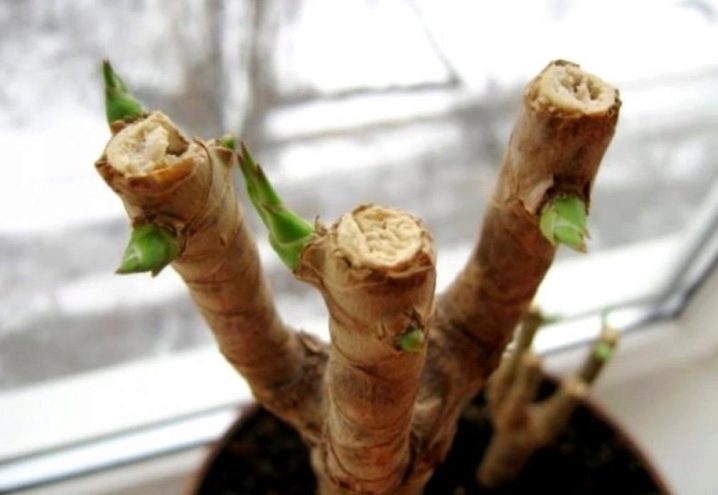
At home, you can use a regular knife instead of a secateurs. It will also help with sawing out the tops. This procedure is carried out only on healthy specimens of yucca, the height of which is at least 0.3 m. The bottom line is that cut off some part of the crown (from 0.05 to 0.1 m).
Whether or not to leave part of the foliage after pruning is up to the growers themselves. Dormant buds are usually left.
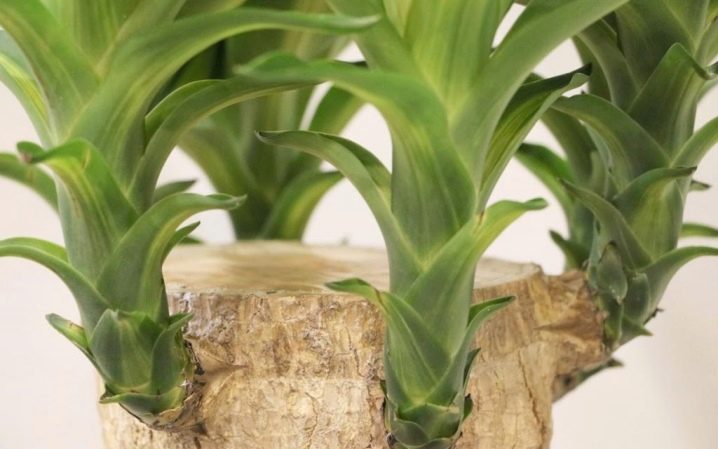
Watering
Yucca is little prone to drought, there is often no need to water it. From the beginning of spring to the end of the growing season, the plant needs to be watered, focusing on the drying out of the earth from above. Less water is needed during the winter months, and watering becomes less frequent. If you water it more often than 1 time in 14 days, you can provoke rotting of the root system.
Of course, during flowering, you need to give the yucca a lot more water than in winter. Since the plant reacts very violently to changes in air humidity, it is recommended to spray it from time to time.For this purpose, boiled water is used, heated not to room temperature, but slightly higher. With active spraying, you can significantly reduce the frequency of regular watering.
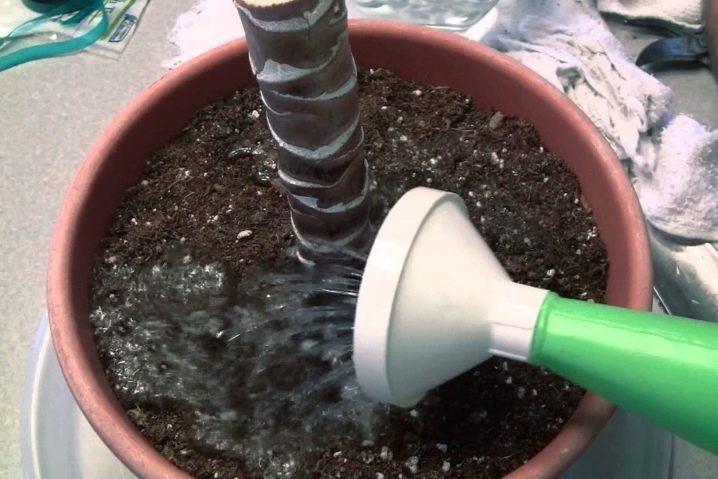
When the yucca is in normal humidity conditions, the middle tier of leaves hangs halfway down. When the earth dries up, they rise and form something like a "boat". To increase the humidity of the atmosphere around, containers are placed on pallets with wet gravel. A little less often, these pallets are filled with various damp moss.
Spraying should not be done in strong daylight. This procedure takes place early in the morning or just before sunset, as an option, you can create an artificial shade.

Transfer
Although most yuccas grow relatively slowly, they do develop and therefore increase the size of the root systems. Planting shrubs in a new pot should be done in the spring. Choosing a different time may not adapt to the new location. Young plants that develop rapidly are transplanted annually. In a more adult age, the intervals from one transplant to another are 4 years. You need to focus on the growing root system. If she fills the pot ahead of schedule, then it’s time for a transplant.
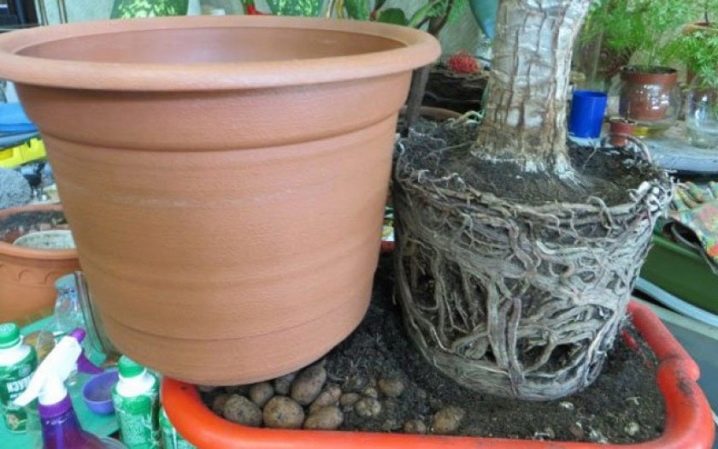
Minimizing stress will naturally be an indispensable requirement, therefore it is advised to use universal garden soils, to which perlite is added. New pots always take more than old ones. They carefully check the quality of the drainage holes, since stagnant water near the bottom is one of the most unpleasant things a grower can face.

For the first 30 days after transplanting into a new land, pruning, feeding and cuttings are unacceptable. This requirement is due to the adaptation of the yucca.
In the containers used for transplanting, in addition to the plant itself and the soil, there must be at least 0.02 m of drainage. The best types of drainage materials include the following:
- crushed brick;
- gravel;
- expanded clay.
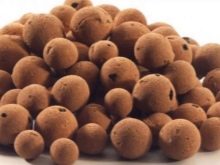
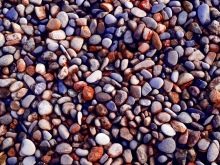
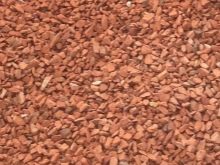
But it is not recommended to take too large pots. This can lead to acidification of the soil. And if it happens, an unpleasant smell appears, which is much worse, since the normal development of the yucca is inhibited, sometimes it even dies altogether. The planting mixture is not too principled, but still it is worth choosing it carefully to ensure you get a decent result. The best planting material is simultaneously breathable and contains nutrients.
Excessive deepening of the yucca is contraindicated. It is recommended to select substrates that are neutral in acidity, such as store-bought palm mixes.
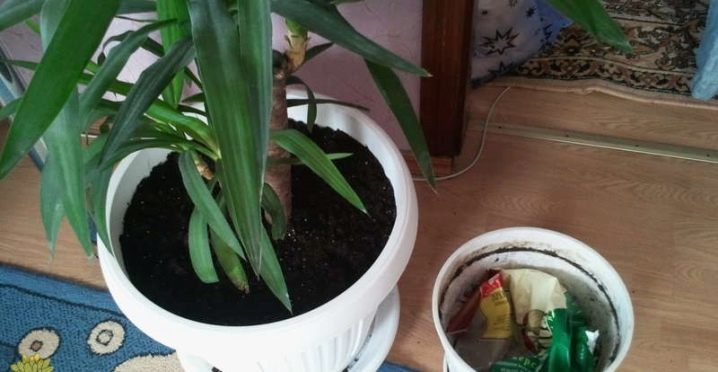
Reproduction
There are various approaches to root this plant (propagate it). Seeds must be sown in light soil. It is created using the following components in equal shares:
- turf;
- washed river sand;
- leafy land.

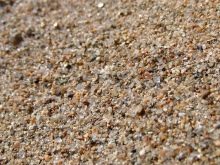
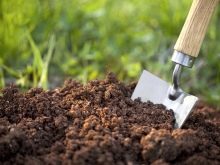
The soil put in the box is moistened, seeds are buried in it at 0.005 m.After sowing, it must be covered with glass. From time to time, plantings are ventilated and moisture levels are controlled. After waiting for shoots (it will take about a month), you need to transplant them into special pots.
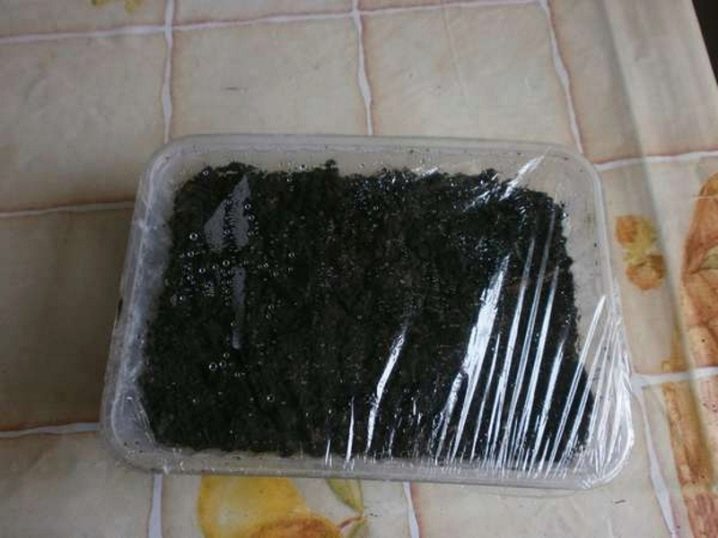
An adult plant can also be propagated by shoots. They start with the separation of the daughter side shoots. They need to be rooted in tanks with water or in vessels with wet sand. Transplantation into prepared pots is performed when roots appear. To obtain cuttings, you will have to cut the trunks. The tops are planted in the ground (it is made up of equal shares of turf and sand), it is necessary to create certain conditions for the greenhouse effect using the following elements:
- plastic bags;
- covers made of transparent materials;
- glass.
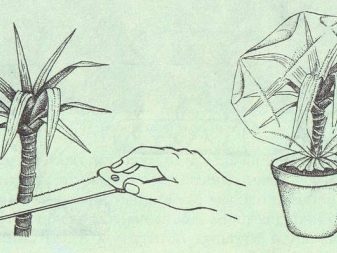
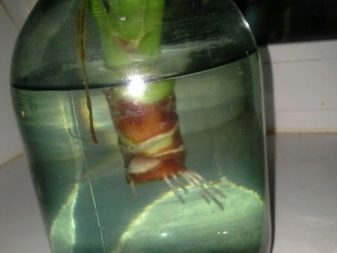
Returning to growing yucca from seeds, you need to point out that it will take about 30 days to wait for seedlings. As soon as a couple of leaves appear, the seedlings need to dive. Seating is carried out in a container with a diameter of 0.06 m.After another 6–8 days, nitrophosphate is added to the same cups or small pots. It is dissolved in water at room temperature to a concentration of 0.1%. In the next season, the plants are transplanted into larger pots. Their diameter will already be 0.08–0.09 m.
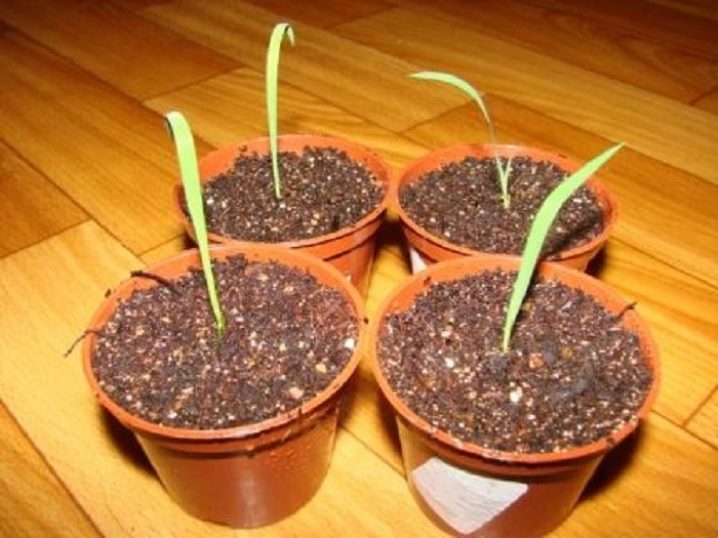
Important! Despite the difficulties of yucca seed breeding, it is definitely worth trying. Sometimes, with this method, variegated seedlings are found, which should not be scared.
Some gardeners propagate yucca with the tops of their heads. For this purpose, cut off the part of the top where there are several leaves. The cut should be sprinkled with a thin layer of coal dust; it will dry out in about 120 minutes. Further, the finished cutting is placed in water or in wet sand. To slow down rotting and souring, several tablets of pharmacy coal are placed in a glass of water. Decay of foliage on rooting cuttings is completely normal.
They will need to be removed, and the water replaced, but at the same time they are closely monitored, so that the rot does not seize the trunk. As soon as the roots sprout, the cutting must be transplanted into the substrate.

You should be aware of the most likely problems when cultivating yucca at home. In winter, this plant may die due to too cold air or unnecessarily abundant watering. It is especially dangerous when both harmful factors are present, therefore, yucca is bred only in warm rooms. It is advisable to carry out winter watering only when the plant itself signals this (or strictly follow the schedule). If the perimeter and ends of the leaves dry, they turn brown. This sign means the following:
- dry air;
- lack of watering;
- draft.
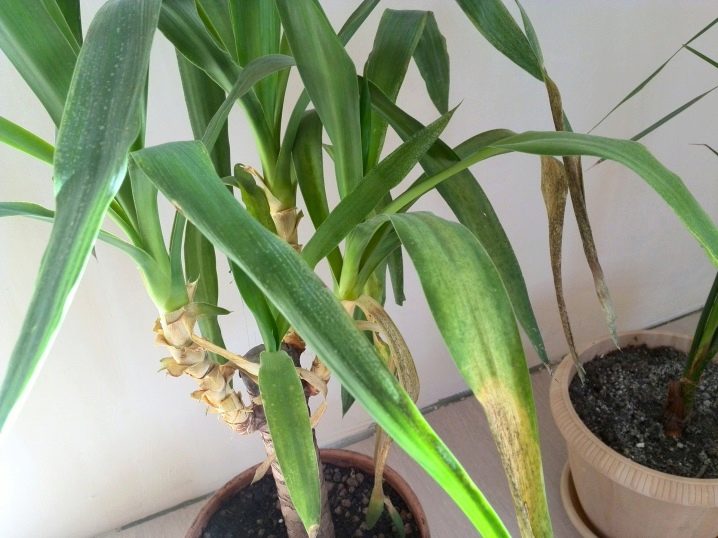
It is necessary to move the plant to a warmer room if if the foliage becomes soft and curled... Brown specks testify to this. The most sensitive yucca varieties suffer even near cold windows. Excessive sun exposure leads to the appearance of light dry areas on the leaf plates.
Diseases and pests
Florists need to know how to solve more serious problems in the life of a yucca, how to deal with diseases and pests.
- Cercosporosis visually expressed in the appearance of brown spots on the foliage. The shape of these spots can vary greatly. An advanced disease leads to their increase. The root cause of cercosporosis is waterlogging. The main measures of treatment include reducing watering, avoiding spraying if possible, and using fungicides.

- Brown spot Is a disease affecting old leaves. On them you can notice fading like spots. After a while, they turn yellow, then turn brown and black. The reason is the same - excess moisture. It is possible to save the culture by reducing the spraying and applying "Profit Gold" or "Ridomil Gold MC".
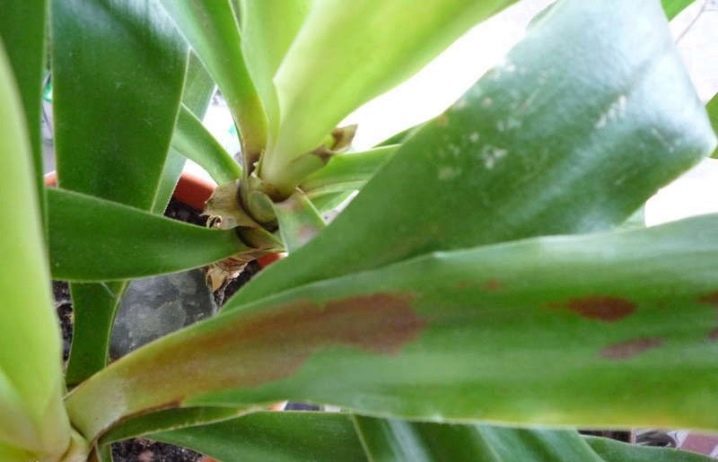
- It is easy to guess that marginal necrosis is expressed in the death of the leaf edge. It mainly manifests itself on older parts of the plant. Dead areas are painted in gray-brown tones. Gradually, it will be possible to see the black fruit structures of the fungus on them. Predictably, you need to reduce spraying and burn diseased leaves. The plant itself is treated with Ridomil Gold MC.
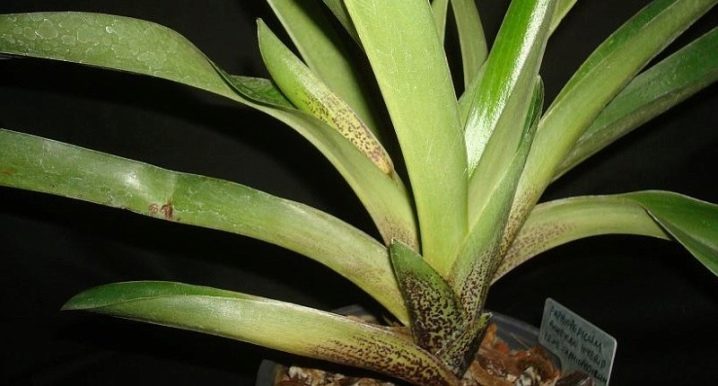
- Quite often, yucca dies due to fusarium. It manifests itself in rotting of the lower part of the leaves. Soon they die off altogether. The cause of the disorder is unjustified dampness, and sometimes even an excess of fertilizers. In addition to the normalization of agricultural technology, the use of "Vitaros" and "Previkur" helps.
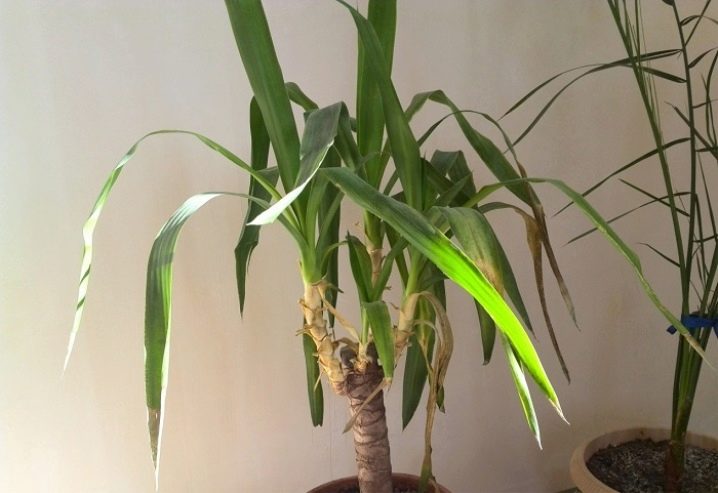
- Of the pests, the spider mite is the most dangerous.which predominantly affects the underside of the leaf. It becomes yellowish under the influence of the parasite, and whitish spots are visible through the leaf tissue. The only way to fight is to use acaricides.
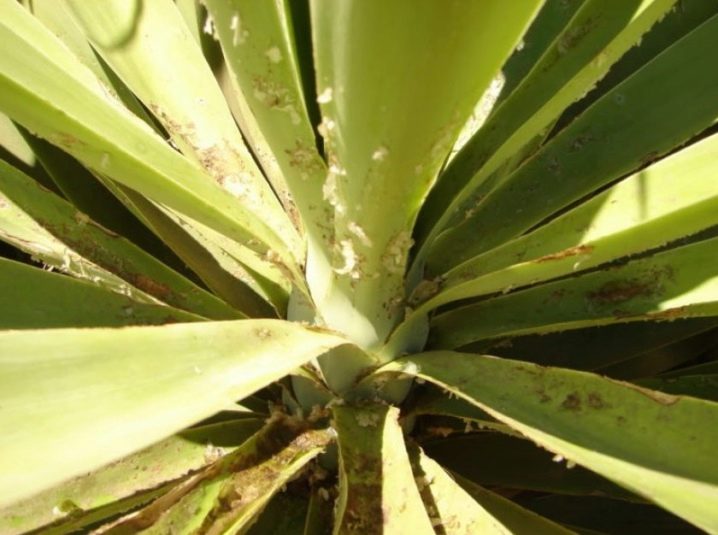
- Yucca can also suffer from false shield. They also feed on cell juices, they can even completely destroy plants. A characteristic sign of the invasion of these insects is tubercles and droplets that look like wax.The substance of the droplets is almost impervious to insecticides, so you have to treat diseased leaves with alcohol, and it is also necessary to change the top layer of the earth.
In such cases it is necessary to do spraying or wiping with Actellik solutions.
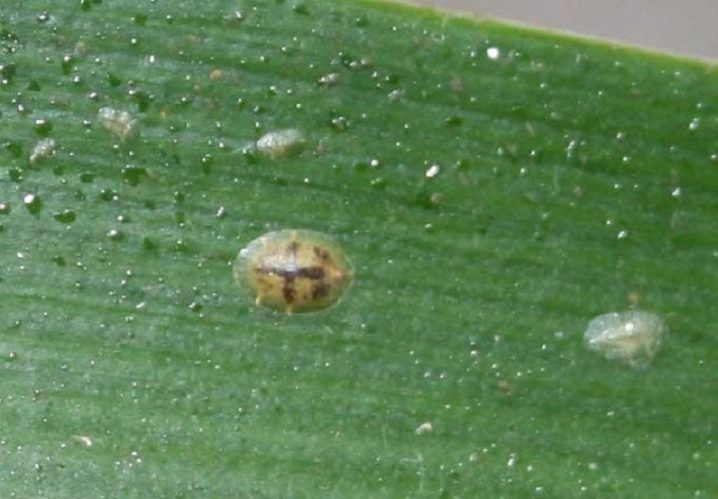
- The whitefly can be a serious hazard. This insect drinks juice from the leaves, as a result, they gradually die off. Ordinary fly sticks help fight whitefly infestation, and you can also use insecticides. The drug "Aktara" is diluted in the proportion of 0.004 kg of substance per 5 liters of water, other formulations are used according to the instructions.
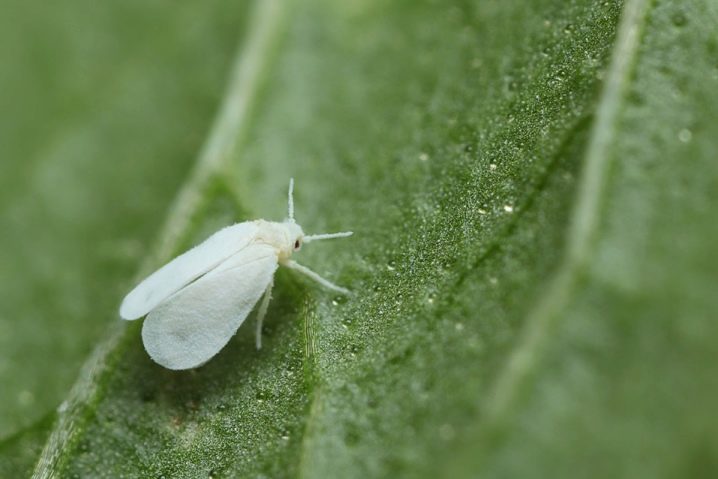
- With high humidity, you can be afraid of attack by slugs. They usually harm yucca in early spring. If there are few insects, you can remove them by hand. However, only treatment with insecticides will help prevent slugs from returning.

For information on how to propagate and care for yucca, see the video below.






























The comment was sent successfully.